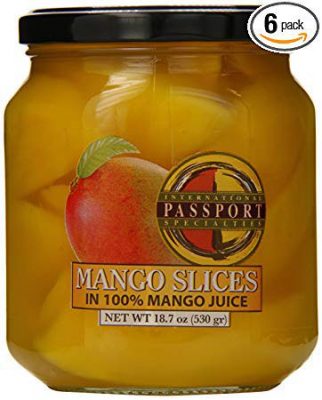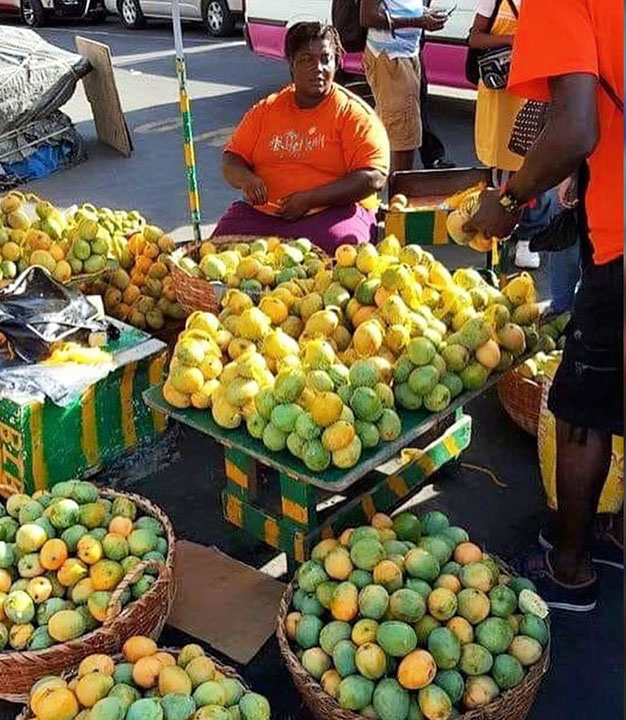Perhaps surprisingly, particularly given its well-known versatility and widespread popularity as a fruit eaten directly from the tree, the mango has not made as nearly a comparable impact in the Guyana agro-processing sector. Scour the supermarket shelves and vendors’ stalls in the various local food outlets and you are likely to find few mango-related agro-processed products – jams, jellies, chutneys, mango slices etc – available for sale even though there may be evidence of a wider range of home-made mango products to be found in domestic kitchens. And yet, based on the argument that mangoes are one of the most popular fruits in the world, (mangoes are enormously popular in China where more than 45 million tonnes are grown every year) it is difficult to put a hand on the reason why more has not been done with this fruit locally, up to this time. While mango, by its versatility, has made itself an important part of the agricultural sector in other countries in the hemisphere, reports continue to be received of the overabundance of mangoes during seasons of plenty in parts of Guyana. This means that much of the fruit must be fed to animals or else, simply disposed of.
A further indication of the global popularity as well as the impressive versatility of the mango is reflected in the Transparency Market Research revelation that globally, processed market product, primarily pulp, is expected to climb to US$2.043 billion by 2026. The new market report published by Transparency Market Research and titled “Processed Mango Product Market – Global Industry Analysis, Size, Share, Growth, Trends, and Forecast, 2018 – 2026,” states that the global processed mango product market for primary processed mango products and secondary processed mango products is estimated to reach a value of US$2,043.1 million and US$31,669 million respectively by 2026, with Asia/Pacific countries likely to possess the lion’s share of the production. These figures reflect the stunning versatility of the mango and serve as a sobering reminder to countries like Guyana about its economic potential.

The sustained growth in the global demand for mangoes is being attributed largely to increasing preference for the highly versatile and sweet fruit as well as an increasing awareness of its nutritive value. These considerations continue to drive the growth of the processed mango market though (as has already been mentioned) there is little evidence that the versatility of the mango has been sufficiently embraced in the Guyana agro-processing sector. One might argue that stringent food safety regulations associated with the export of processed fruit may be an inhibiting factor in terms of the international market access though that hardly justifies the limited use of the mango in the local agro-processing sector, mango achar being the notable exception. Production of an expanded range of mango-based agro-produce may also be limited by the abundant availability of mangoes on the local market only during certain seasons, drastic fluctuations in mango prices as well as the rise in preference for organic mangoes. Here in Guyana there are also limitations associated with the underdevelopment of the agro-processing industry and more particularly the equipment and machinery-related lack of processing capacity.
All that being said, increasing consumption across the globe can increase the export value of mango products especially in the U.S. and in Europe and certainly opens new and potentially lucrative export opportunities for Guyana which both government and the private sector would do well to explore.
The most commonly used agro-products in the global market are primary processed mango products. These products include dried mango, mango puree, mango pulp, achar and concentrate, among others. These are used in a bewildering array of food preparations and as condiments. Secondary processed mango products are now easily available and are preferred across households. Some of these include mango juice, fruit bars & candies, jam, jelly and pickles. Here again, none of these can be found (at least in significant quantities) on the Guyana market. Authoritative reports provide a strong indication that mango products such as mango puree, pulp, and concentrate will continue to increase in demand in the period ahead while the demand for secondary processed mango products such as fruit bars & candies will also continue to grow. Demand for mango juice is also expected to rise at a brisk pace. Primary products such as dried mango are also expected to make a further impact on the global market. These developments are expected to further open up global distribution channels including on-line channels.
Arising out of all this, the Asia-Pacific mango-producing countries including India and China, (Asia Pacific is the largest producing region for both mango and mango product markets) are ideally positioned to gain the most from the increased global demand for mango and mango products in the period ahead. Asia Pacific processed mango product market for primary and secondary processed mango products will expand at over 5.9% and 7.3% respectively and the market is expected to reach US$705 million and US$15,776 million by 2026. Demand for processed mango products in Asia Pacific is likely to remain concentrated in India and China due to the presence of a larger number of consumers. Some measure of growth is also projected for South American processed mango product.
While all of this should, in theory at least, bring some benefit to the Guyana agro-processing sector, the immediate-term portents are not particularly encouraging. Reliable statistics on the volumes of mango production in Guyana are simply not available although the interior regions of Guyana are known to produce the fruit in significant quantities. The volumes of mango production are measured almost exclusively from the seasonal appearance of the fruit itself on the local market and this newspaper could find no evidence of a surfeit of primary or secondary products (juices, jams, chutneys, drinks etc.) being manufactured in meaningful commercial quantities in Guyana. Nor does it appear that there exists any sustained push, at either the public or private sector levels, for the creation of a mango by-products industry and the potential for making inroads into the international market. Contextually, local potential investors may wish to know not only that the annual increase in mango consumption in the United States more than justifies a more vigorous effort to probe the market potential for both the fruit and its by-products but that there may even be further market opportunities on the wider global market which is expected to grow at a Compound Annual Growth Rate (CAGR) of 6.7% and 7.1% respectively for primary processed mango product and secondary processed mango product.
In recent years, investors in Asia and elsewhere have developed their business models to meet the demand and regulations of the processed mango product market. The major players are focussing on product innovation and collaboration, attributes which are prominent among Guyanese agro-processors, to expand their business.
Manufacturing choices in terms of both primary and secondary mango product are wide. In the area of primary products there are lucrative markets for dried/dehydrated mangoes, puree, pulp and concentrate and slices and dices. In the secondary process mango product market the options include fruit bars and candies.
Ongoing discussions between the Guyana Manufac-turing and Services Association and the Government of Guyana ministerial team would do well to embrace the prospects for the all-round development of the mango and mango product industry in Guyana as well as the export market potential. Two considerations loom large here. The first is the lack of any real progress, up until now, in the search for lucrative markets for products in which Guyana may well have some measure of competitive advantage. This deficiency has worked to the considerable disadvantage of the local agro-processing sector which, ironically, has demonstrated a marked improvement in the range and quality of the products which it has placed on the local and regional markets.
The second consideration relates to the costs associated with investment in sophisticated plant and machinery which becomes necessary if the manufacturing ‘game’ has to be raised. That has implications for both the preparedness of the local lending sector to embrace the risk and return formula presented to them by the potential investors as well as the preparedness of government to seriously support the opportunities for significant expansion of the agro-processing sector presented for the continually growing demand for mango and mango products.






